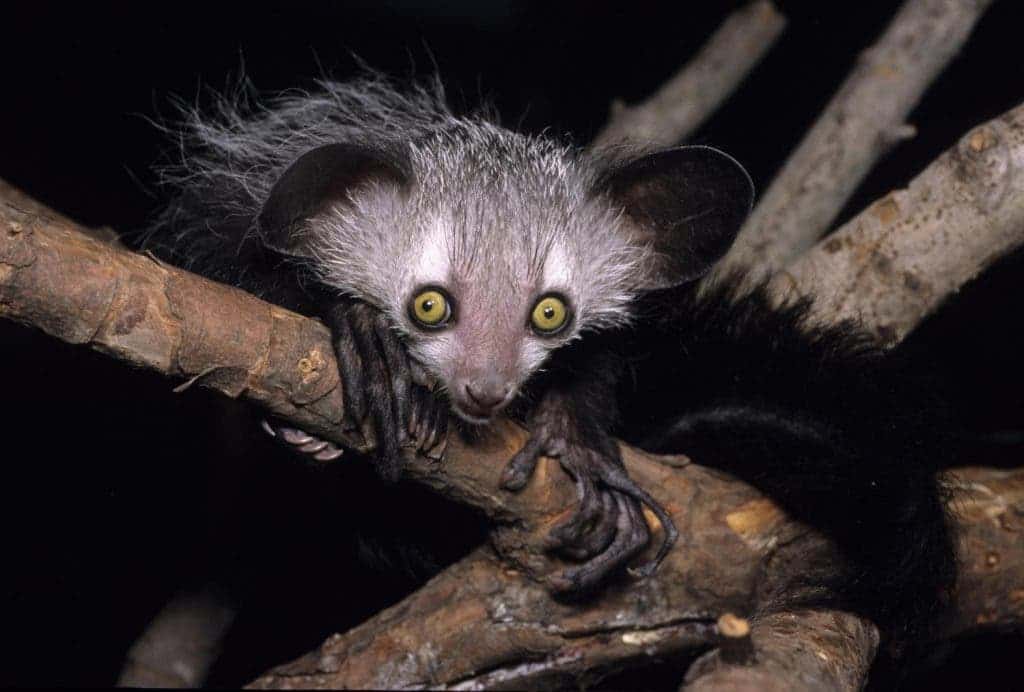
Image credit David Haring
From the pubs and bars that line the city streets to the fermented nectars, spas and fruits in nature, alcohol is everywhere. Much like humans, primates have adapted alcohol into their diets and – also like humans – evolved the ability to digest it quickly. Now, a new study shows that the strange aye-aye, a prosimian primate that possesses a genetic mutation also seen in humans and African great apes that accelerates alcohol digestion, prefers alcohol beverages.
The aye-aye is a nocturnal lemur originating from Madagascar with an evolutionary lineage that spans back almost 70 million years. They are some of the strangest creatures on the planet, with unique bony fingers that they use to find grubs in dying tree trunks.
“Aye-ayes are essentially primate woodpeckers,” said Nathaniel Dominy, a professor of anthropology and biological sciences at Dartmouth. “So it is puzzling that they can digest alcohol so efficiently.”
During the wet season, however, the proportion of tree nectar in the aye-aye diet increases. If this nectar is fermented, than a boosted alcohol digestion would start to make more evolutionary sense.
The team tested alcohol preference in two aye-ayes using a nectar-simulation solution of sucrose, as well as the preference of one slow loris, which is the only primate currently known to consume fermented nectar in the wild.
The alcohol concentrations in the nectar-simulation solutions were low, ranging from none to five percent in order to reflect the levels typically found in nature. For each liquid treatment there were two controls of tap water, each placed in a circular array of small-recessed containers in a round resin outdoor table. Positioning was randomized and the experimenters were blind to the contents of the containers during behavioral data collection to eliminate any kind of observational bias.
Each of the two aye-ayes conducted the trial once a day for a total of 15 days and 30 trials between the two of them. Conversely, the slow loris participated in one trial per day over five days for a total of five trials.
The results revealed that the aye-ayes could not only discriminate between the tap water containers and those with alcohol, they adjusted their intake according to the varying alcohol concentrations in the liquid treatments. In addition, they preferred the treatments with the highest concentrations of alcohol and continued to search the high concentration containers long after they were empty.
Data from the slow loris trials was too limited for any statistical results, but discrimination and preference patterns were almost identical.
The results highlight the idea that fermented foods were an important part of our ancestors’ diets and suggest that the genetic mutation that increases alcohol digestion seen in humans, African great apes and aye-ayes is linked to the consumption of fermented fruits on the forest floor.
“This project has definitely fueled my interest in human evolution,” said Samuel Gochman, a student from Dartmouth University and lead author of the study. “Our results support the idea that fermented foods were important in the diets of our ancestors.”
Journal Reference: Alcohol discrimination and preferences in two species of nectar-feeding primate. 20 July 2016. 10.1098/rsos.160217









